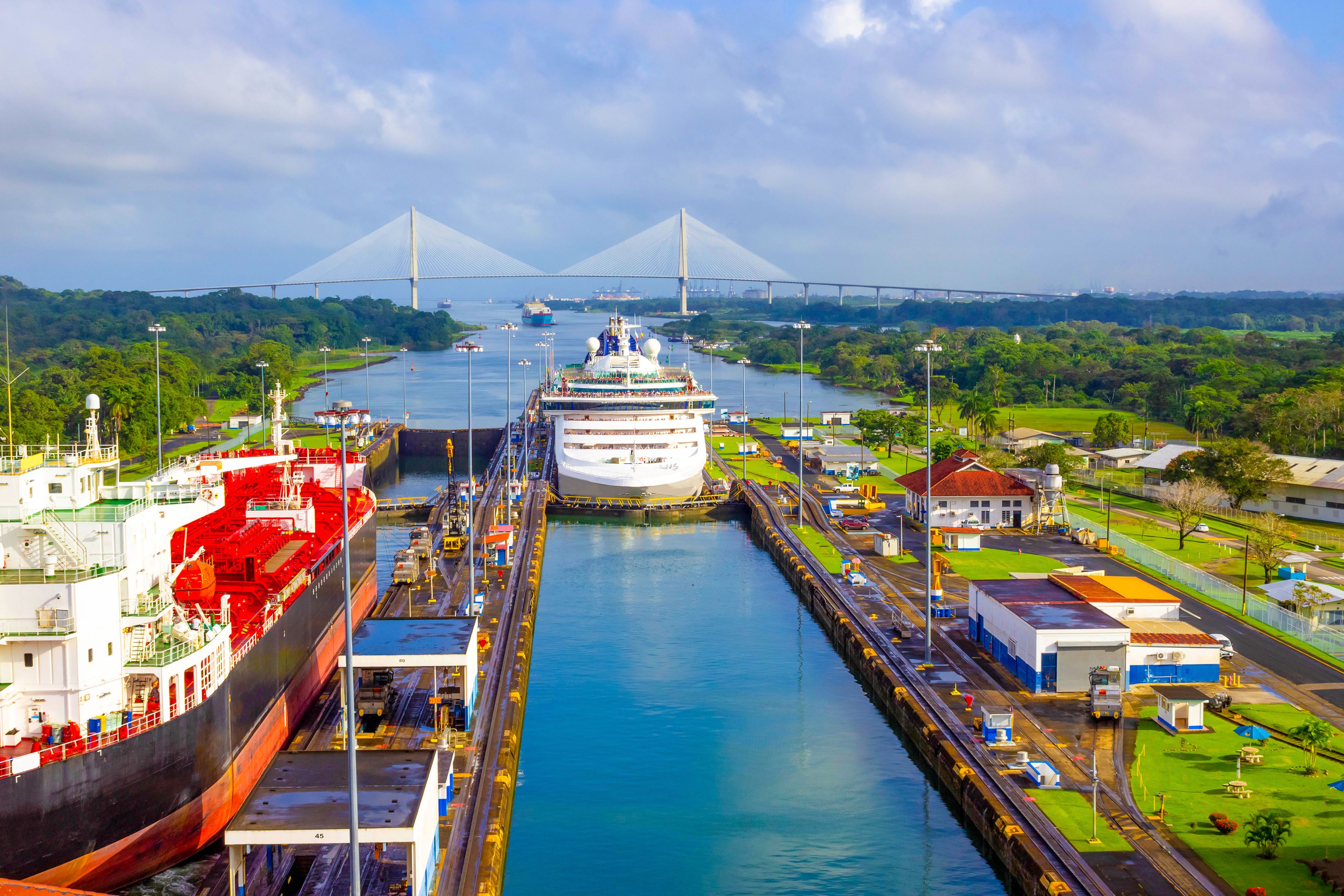
Trade experts have reacted positively to news that Panama’s maritime authorities have eased restrictions imposed on shipping going through the Panama Canal, although the true impact on costs is not yet known.
The Panama Canal Authority (PCA) said that it would increase its daily transits again after better-than-expected rainfall in the Central American nation.
Months of climate change-related droughts forced the body to restrict transit through one of the world’s most important trading passages.
Not yet optimal
The PCA recently unveiled a series of measures aimed at “optimising transit operations” through the waterway.
From 16–31 May, the number of daily transits through the Panamax locks will rise from 17 to 24. Starting 1 June, the number of daily transits through the Neopanamax locks will increase from 7 to 8.
In pre-drought times, the normal amount of transits per day was 36-38.
In addition, the maximum permitted draft for vessels transiting the Neopanamax locks will be raised to 13.71 meters from June 15 onwards, up from the current limit of 13.41 meters.
The PCA had already increased its total number of ‘Panamax’ slots in March from 17 to 20 after favourable weather conditions earlier in the year.
‘Relief’
There will, however, be a temporary reduction from 7–15 May, which will see the number fall from 20 to 17, as the PCA says it is carrying out scheduled repair work at the Gatun Locks.
The news brings relief to many in the industry, as when combined with the ongoing Red Sea crisis, two of the world’s largest trading routes were experiencing significant delays.
Frasier Huckle, consultant at freight forwarder Baxter, said:
“It’s a relief to see the lane opening up again, albeit slowly. We should hopefully see market prices begin to drop now.
“It’s also possible that the prices remain constant; the Baltimore incident was predicted to have a huge impact on index pricing but that’s not been the case.”
Due to carriers’ relative control over the market, Huckle said it was “guesswork” as to the effect of the recent announcement on market prices.
Surcharges
In early April, Maersk announced it would be resuming some of its shipping through the canal ahead of planned changes. Other major shippers have not, as of yet, made any announcements.
Matt Vick, customs and trade specialist at the Institute of Export & International Trade (IOE&IT), said that, if more liners follow suit, “the long diversions via Suez or the Cape of Good Hope and other routes will hopefully be less common, reducing transit time and costs”.
In November, many companies imposed additional surcharges on goods being shipped through the canal, sparking concerns of a boost to inflation. There have currently been no announcements on how long these surcharges will last.
Climate change
In 2023, there were 14,080 total transits via the Canal, with ships going to 1,920 ports, and it remains one of the most used trading passages in the world. Asia-US trade was particularly affected by the closure.
Since August last year, authorities had been reducing the number of slots available for ships passing through the canal.
This prompted a rush for slots, with some shippers paying record amounts in bidding wars to secure a space while those that lost faced extensive waits.
The Panamanian government last week (11 April) proposed a ‘Multimodal Dry Canal project’ that it said was a “modern” solution to the problem. The plan would involve moving goods by train and lorry.

